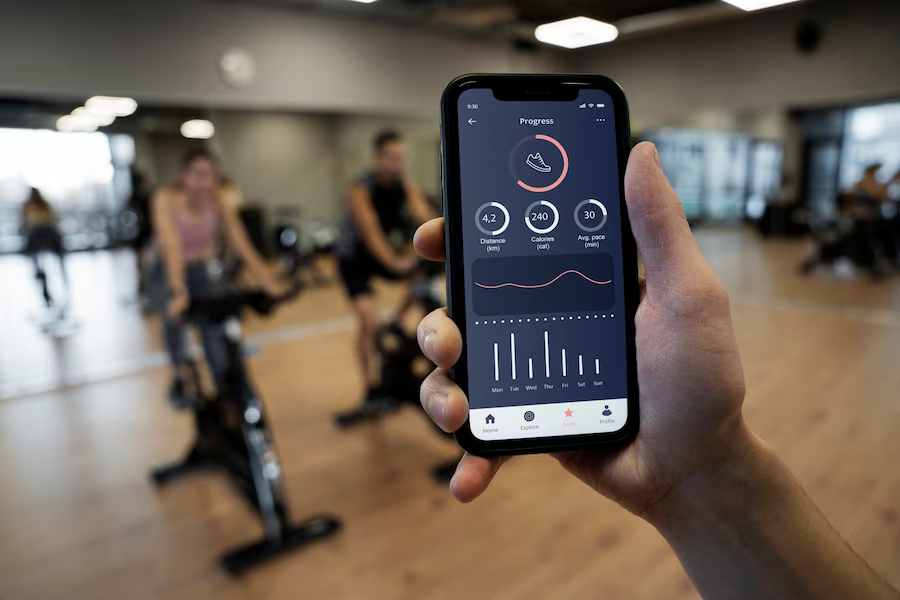The fitness industry has significantly shifted towards mobile applications in the digital transformation era. If you are looking to make your own fitness app, you’ll face a competitive market but one filled with opportunities for innovation (this Topflight entry will help you). Identifying which type of fitness app has the most promise for business ventures involves understanding current trends, consumer behavior, and technological advancements. This article delves into various categories of fitness apps, offering insights on how to strategically position a new app in the market.
Key Types of Fitness Apps
Fitness apps generally fall into several categories, each serving different user needs and preferences. Here’s an overview of the most promising types for business ventures:
Workout and Exercise Apps: These apps provide users with workout routines and can range from general fitness to specific types like yoga, strength training, or Pilates.
Nutrition and Diet Apps: Focused on helping users monitor their dietary habits, these apps often include meal planners, calorie counters, and nutritional information.
Activity-Tracking Apps: These apps utilize sensors in mobile devices or wearable technology to track activities like walking, running, and cycling, providing feedback and analytics on user performance.
Personal Trainer Apps: Offering a more personalized approach, these apps simulate having a personal trainer by adapting workouts to the user’s progress and preferences.
Mindfulness and Meditation Apps: These apps cater to mental and physical health. They provide guided meditations, breathing exercises, and other practices to reduce stress and improve mental well-being.
Market Trends in Health and Fitness App Development
Several trends driving consumer interest and adoption influence the fitness app market. Increased awareness about health and wellness, the affordability of mobile devices, and the availability of wearable technology have all contributed to the surge in fitness app usage. The COVID-19 pandemic has dramatically accelerated the adoption of digital fitness solutions as people sought ways to stay fit while adhering to social distancing measures.
Popularity and Demand
Consumer demand for personalized and convenient fitness solutions continues to grow. According to recent market research, the global fitness app market is expected to grow significantly in the coming years, driven by increasing health awareness and the proliferation of smartphones and wearable devices.
Technological Innovations
AI and machine learning advancements enable fitness apps to offer personalized experiences, adaptive workout plans, and real-time feedback, making them more appealing to users. Integration with other health-monitoring devices and platforms also enhances the utility and attractiveness of fitness apps.
How to Create a Fitness App: Steps to Success
Creating a successful fitness app involves several critical steps.
Identify your niche. When planning how to create a fitness app, the first step is to identify a niche that addresses specific consumer needs not met by existing apps. This could be an app that combines physical exercises with mental health practices or uses AI to offer highly personalized training programs.
Focus on user experience. A seamless and engaging user experience can set your app apart from competitors. It’s essential to design an intuitive interface that is easy to navigate and pleasant to use. To keep users engaged, incorporate interactive elements, motivational tools, and visually appealing design.
Leverage the right technology. Selecting the appropriate technology is crucial when you build a fitness app. This includes choosing between native, hybrid, or cross-platform development, depending on your target audience and budget. Employing the latest technologies like AI, augmented reality (AR), and motion detection can enhance the functionality and uniqueness of your app.
Ensure scalability and security. As your app gains more users, it is crucial to scale to handle increased traffic and data. Additionally, because fitness apps often handle sensitive personal information, prioritizing security to protect user data is imperative.
Decide the questions of marketing and monetization. Develop a strong marketing strategy to launch and promote your app. Consider partnerships with fitness influencers and communities to increase visibility. Options for monetization include in-app purchases, subscription models, and advertising. Each method has strengths and should align with your business goals and user expectations.
Conclusion
Developing a fitness app requires a deep understanding of the market, a clear identification of user needs, and the strategic use of technology. By focusing on areas such as personalized fitness experiences, comprehensive wellness solutions, and seamless integration with health devices, entrepreneurs can tap into the lucrative fitness app market. Whether you aim to make a fitness app that motivates users to stay active, helps them track their nutrition, or supports their mental health, the potential for innovation and success in this domain is vast. With thoughtful planning and execution, fitness apps can be a rewarding business venture promoting healthier lifestyles and providing users with real value.
Keep an eye for more latest news & updates on Essential Tribune!








